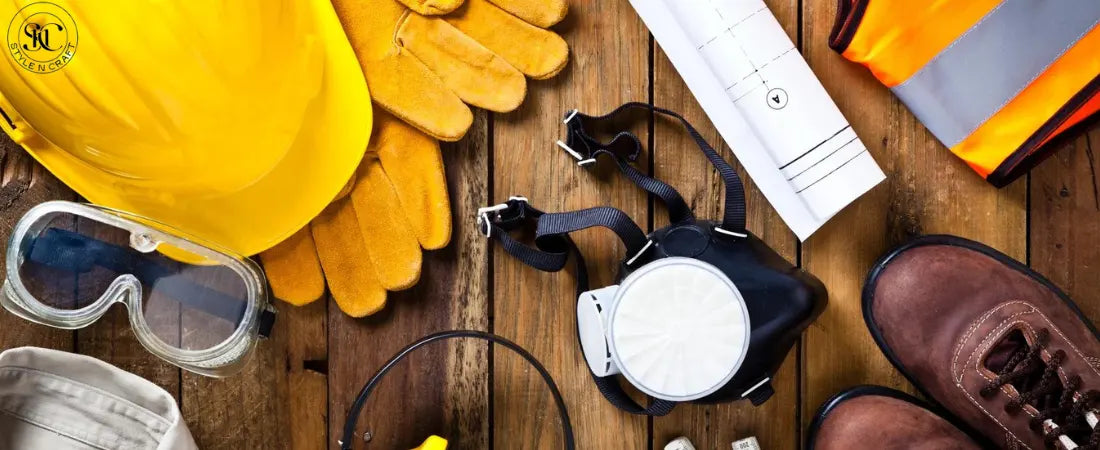As a professional carpenter, the right workwear isn't just about fashion – it's about safety, comfort, and efficiency. The demands of carpentry work require specific clothing and gear that can withstand the challenges of the trade. Let's dive into the essential workwear for carpenters and explore what carpentry work clothes ensure both safety and functionality on the job.
Carpenter Safety Workwear:
When it comes to carpentry work clothes, safety is paramount. Carpenters work in environments where physical hazards are prevalent. Therefore, investing in quality carpenter
safety workwear is crucial. These include durable work pants, reinforced with knee pads for protection against kneeling, and sturdy work boots with steel toes to shield against falling objects.
Workwear for Carpenters:
Apart from safety, the functionality of workwear for carpenters is equally vital. Carpenter clothes should allow ease of movement without compromising durability. Consider breathable, moisture-wicking shirts and jackets to stay comfortable during long hours of work. Additionally, vests or
tool belts with multiple pockets are invaluable for keeping essential tools close at hand.
Carpenters Workwear: Best Leather Woodworking Apron & Leather Carpenter's Apron:
One of the standout essentials for a professional carpenter is a high-quality leather woodworking apron. The best leather woodworking apron serves as a shield against wood chips, sharp tools, and dust. It not only protects your clothing but also provides convenient pockets for storing small tools. A leather carpenter's apron, with its durability and functionality, is a staple in a
carpenter's work attire.
Construction Work Clothes:
Carpentry work often intersects with construction sites. Hence, versatile construction work clothes are essential. Opt for rugged, tear-resistant shirts and pants that can endure the rigors of both indoor and outdoor construction environments. Layering options like vests or jackets can adapt to varying weather conditions.
Selecting the Right Workwear:
While there's no one-size-fits-all approach to carpenters' workwear, selecting the right attire involves a combination of safety, functionality, and personal preference. Prioritize quality materials and craftsmanship when choosing carpentry work clothes. This ensures longevity and reliability, reducing the need for frequent replacements.
Protective Gear for Carpenters:
In addition to standard workwear for carpenters, investing in specialized protective gear is paramount. Safety goggles or glasses shield the eyes from flying debris and sawdust, reducing the risk of eye injuries. Ear protection such as earmuffs or earplugs safeguards against the constant noise of power tools, preserving long-term hearing health.
Weather-Adaptive Workwear:
Carpenters often work outdoors, exposed to changing weather conditions. Layering becomes crucial. During colder months, thermal base layers under work shirts and jackets can provide insulation without compromising movement. Waterproof outer layers are essential to stay dry in rainy conditions. Don't forget to invest in moisture-wicking socks to keep feet dry and prevent discomfort.
Choosing the Right Work Boots:
Work boots are a cornerstone of carpentry workwear. Comfort, durability, and safety should be prioritized when selecting the right pair. Look for boots with a strong grip to prevent slips, electrical hazard protection, and support for long hours of standing. Properly fitted boots reduce fatigue and prevent foot-related issues.
Maintenance and Care of Workwear:
Caring for carpentry work clothes and gear is vital to ensure their longevity. Regularly cleaning workwear prevents the buildup of debris and extends their usability. Follow manufacturer guidelines for washing and maintaining specific items such as the best leather woodworking apron to preserve their quality.
Customizing Workwear for Efficiency:
Tailoring workwear to personal preferences can significantly impact efficiency. Consider customizing tool belts or vests to arrange tools and equipment according to your workflow. This customization minimizes time spent searching for tools, enhancing productivity.
Embracing Innovation in Workwear:
Advancements in fabric technology have led to innovative workwear solutions. Some manufacturers offer flame-resistant clothing, providing an extra layer of protection in hazardous work environments. Additionally, ergonomic designs in carpentry work clothes improve comfort and reduce strain during repetitive tasks.
Adapting Workwear for Different Carpentry Specializations:
Various carpentry specializations may require specific adaptations in workwear. For instance, a finished carpenter might prioritize stain-resistant and more refined clothing compared to a framing carpenter. Understanding the demands of your specific carpentry niche helps in selecting the most appropriate work attire.
Seeking Comfort without Sacrificing Safety:
While prioritizing safety is crucial, comfort shouldn't be compromised. Ill-fitting or uncomfortable workwear can lead to distraction and decreased productivity. Finding the right balance between safety features and comfort ensures a pleasant work experience.
Final Thoughts:
In the world of carpentry, the significance of appropriate workwear cannot be overstated. It's not just about adhering to a dress code; it's about safeguarding yourself against potential hazards, maximizing productivity, and promoting a positive work environment.
By investing in quality workwear for carpenters, adapting to varying job requirements, and prioritizing personal comfort, professional carpenters equip themselves with the tools to thrive in their craft while staying safe and comfortable.
Remember, the right workwear isn't just a uniform; it's your armor and your ally in mastering the artistry of carpentry.

